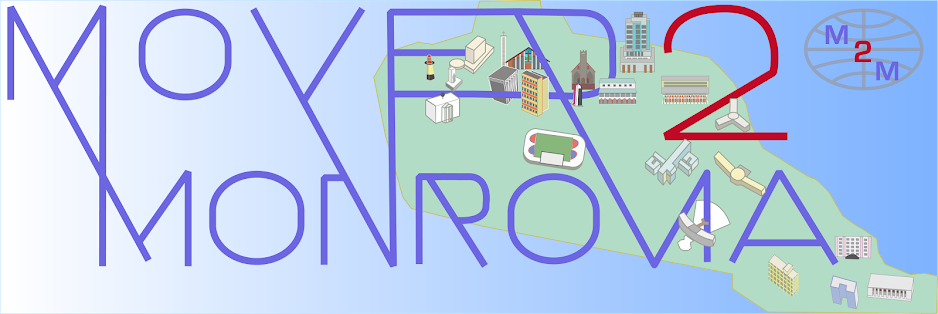…$385,000 per year?!
In what seems to occur with ever-increasing regularity, the Liberian government was exposed in a shocking headline, the boldface type squeezed together to fit in all the zeros. Such an eye-popping figure jumped out of
the latest j'accuse on one of the most recent controversies: the Liberia Telecommunications Agency supposedly signed a multi-year lease for a newly-built office compound in Congo Town, priced at $1,155,000.
How could any property, no matter how grand, command such a price in the world's fourth-poorest country? But the seven-figure phalanx is only the most densely-formed particular of the tale, which perfectly reflects both the artifice and the reality of this city’s social and political transacting.
Monrovia, like many African cities, is a place where astronomical real estate prices, rivaling office and residential rental rates in American cities, spike above a dismal landscape of unlit, unplumbed $10-per-month rooms, home the vast majority of the city's residents. The elite amalgamation of government, philanthropy and diplomacy, which is meant to serve these desperately poor people, sprays enormous volumes of expenditure, not towards their desperate constituents below, but high aloft into this stratosphere, above the zinc roofs and over the walls into the freshly-finished, $3,000 per month sea view apartments and quarter-million-dollar per year office compounds.
Another gated compound. Photo courtesy FrontPageAfrica.
What makes the situation, if not worse, than at least politically expedient, is these huge windfalls are initially captured by the tiny foreign commercial class, whether Lebanese, Syrian, Spanish, Chinese, Egyptian, Turkish, or American. Only secondarily does this non-citizen strata remit the ultimate rent to the Liberian elite: most of whom are currently or recently in government. It is not just a fact but a common practice that many of the tenants and ultimate landlords are one and the same. It is no wonder, then, that for decades and decades the Liberian government is constrained of office space, and must perennially turn to the private market to find suitable accommodation, and must pay the prevailing price.
The LTA saga casts all the usual characters precisely in this reinforcing relationship: the quasi-regulatory agency, headed by a returnee with an only-famous-in-this-town last name; the landlord-builder, not Liberian but a semi-mysterious, Chinese firm with a participation rate in the post-conflict boom that dubiously prolific, who together strike a deal for one of the plethora of "Upstairs Buildings" which have risen up across Monrovia since 2006 by the dozens.
Then, there are the brass tacks: the sums, the numerals, the commas, the zeros. And why not? It is a difficult country, hard to secure land, hard to build, hard to wait for a return on investment. Hard to trust someone. So it's the logic of the market, the invisible hand(s). It is the fee that is commanded. Who’s to say if it is a waste? There is no alternative.
And so, in one of the few remaining countries in the world where the GDP works out to less than one dollar per person per day, a million dollars doesn't buy you very much: a few years at your appointed office, high aloft with a view to the ocean, the air-conditioning floating down from the wall-mounted unit, relentlessly holding back the tropical heat outside the walls. After a few seasons, time is up, the keys are turned over, and it is someone else's turn to pay fictitious lease rates, and feel the artificial air soothe their skin.
The rent is so like that man-made cold air. It doesn't last long, and has to be relentlessly replaced. As soon as the machine is shut off, the oppressive heat outside leaks through the cracks. Like that cold, the rent is gone; it’s floated away into the atmosphere.




















